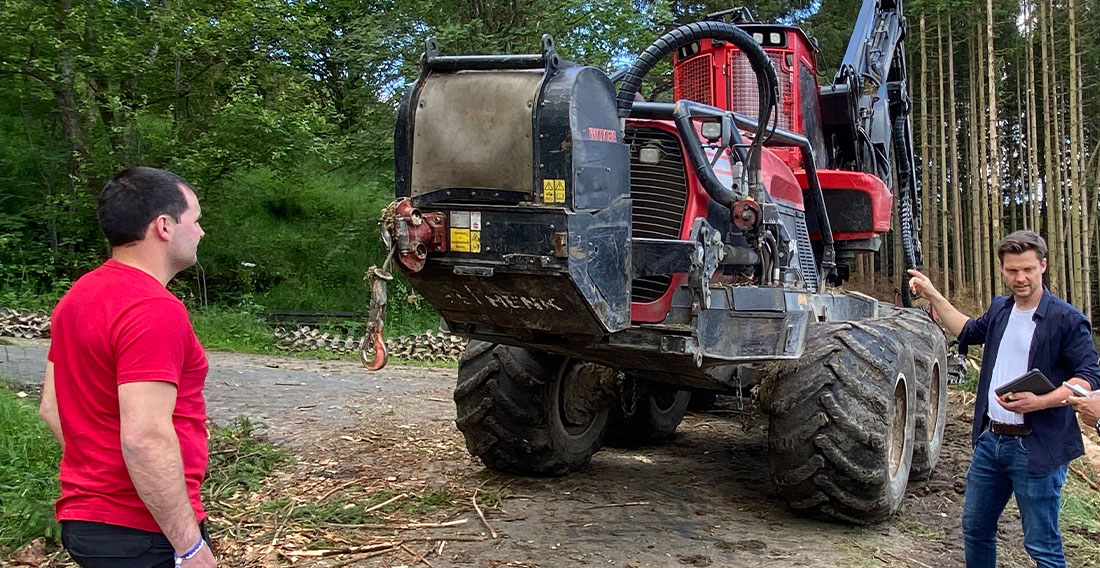As a boy growing up in Germany, Simon Wuetz was fascinated by anything that had an engine and wheels, especially if it was big and sounded powerful. But it wasn’t enough to watch excavators, dozers and dump trucks work. He wanted to know how they worked. “Over the years, I kept learning more, and it kept getting more and more interesting to me.”
Today, Wuetz is still learning, and he’s still fascinated by the unending potential of machine engineering and technology.
Wuetz started out as a car mechanic before deciding that combining technical knowledge with forestry could open opportunities in a field that stretches across the globe and is critically important to society. He joined Komatsu Forest in 2008 after earning his degree in forestry engineering, filling several roles before landing in his current job in fleet support, based not far from where he grew up

Wuetz helps forest managers throughout central Europe get the most out of the equipment and technology available to them. He trains operators to drive Komatsu-built forwarders and harvesters, helps staff use Komatsu-designed technology solutions and provides job sites with remote support and troubleshooting.

Along with a team of engineers and technicians, Wuetz also works on product improvements and technological refinements that help foresters face challenges like the bark beetle. “We are creating value together, and that means we have quite a big focus on the customer. So, it’s also my job to listen to the customer.”
The solutions he and his colleagues pursue keep getting better as they push the possibilities of technology forward. Since his start, Wuetz has seen remote support sessions evolve into remote data collection, then interactivity through IOT and further advancements like the ones they’re using to pinpoint and cull diseased trees.
“It’s no longer just about machines of steel. It’s more and more about intelligent machines.”
He describes his job as a rewarding variety of people, places and challenges as he travels throughout central Europe to interact with different stakeholders and observe different forestry practices. Some clients might have one machine, others might have dozens. “It’s a chance to be with the customer in the forest, out in nature, then return to the office to work on strategies to help them.”

The work is always interesting because it is never done. “We have to think at least one step beyond how it works today and anticipate how it will work tomorrow.”
